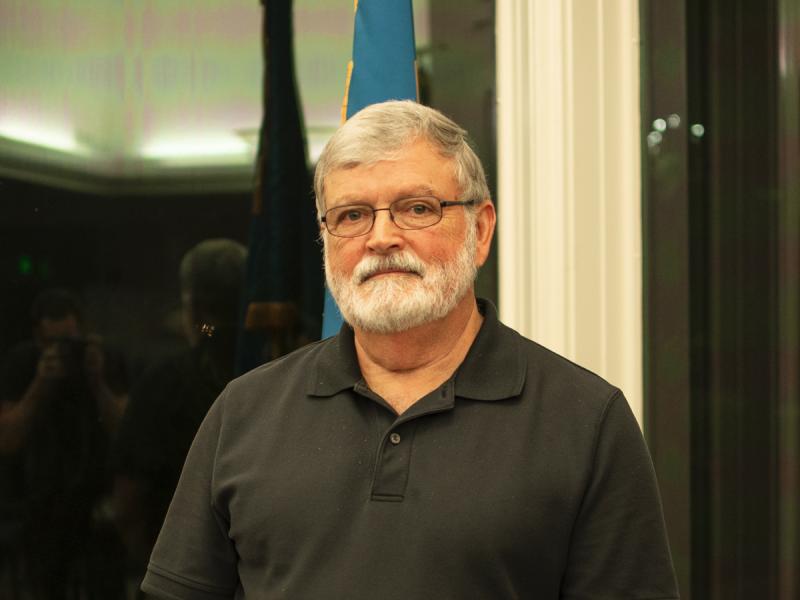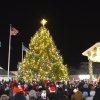17th century Indian towns in Sussex uncovered
The Archaeological Society of Delaware's Sussex County Chapter held its monthly meeting at the Lewes History Museum and Margaret H. Rollins Community Center May 19, focusing the night on a presentation given by former Division of Cultural Affairs Director Daniel R. Griffith.
The University of Delaware graduate and head of the Griffith Archaeology Consulting firm gave an in-depth look into American Indian Towns of Sussex County in the 17th Century, and the relationship between the locations that were cultivated as of Capt. John Smith's map in 1608 and the current landscape.
Griffith worked on this project for the State of Delaware for several years in coordination with the Chesapeake Conservancy and the Captain John Smith National Historic Trail.
During the early 17th century, most of the land along the Eastern Shore and Chesapeake Bay was owned by competing English, Dutch and Swedish colonies, but it was well populated by American Indians.
The investigation was all based on Smith's three-day voyage up the river in June 1608, and the map that was made reflecting this. Smith's map showed three Indian towns: Nause, Nantiquack (now known as the Nanticoke) and Kuskarawaok or King's Town (where Indian leadership lived), highest up the Nanticoke River extending from the Chesapeake Bay.
During this time, Indian towns were not established as localized areas, but more non-nucleated, dispersed settlements; homes were strewn out across clusters of land accompanied by agricultural fields and trails to make travel and things like hunting and fishing easier.
Determining present-day locations of these towns was the goal of this study, so much research was done based on three elements: distance, bearing and direction. "John Smith's map was not a navigation chart, but a graphic representation of the natural and Indian cultural landscape," said Griffith.
Things had changed over time along the Nanticoke River, such as: plant and animal species differential, invasive species intrusion, the growth of agriculture on once clear and cultivated land, and most importantly, the 3.5 to 4-foot sea level rise that resulted in changing the way the river flowed.
After determining the distance between the towns, which were in a line along the northern side of the river, the presence of specific artifacts such as Townsend-style pottery, roulette-decorated terra-cotta tobacco pipes, various Indian ceramics, triangular arrow points, and even European trade beads would give Griffith a better grasp on the present-day location of these sites.
After locating many artifacts that have been preserved, dated and categorized by location, Daniel had a much better idea of how these towns were laid out, and even discovered a possible trading place near Kuskarawaok.
As time moved forward, Indians were moved to reservations such as the Broad Creek Reservation, which was located near Laurel and leased from 1711 to 1768.
The Dutch also purchased land for the Indians in Lewes, and established the town known as Chesonesseck, and another reserve was created, the Assateague Reservation, from 1711 to 1742, near Millsboro.
After reservations were no longer set aside, most Indians either moved north or west while some dissolved into the new towns after the 18th century.
Although there has been debate about the population of Indians in Southern Delaware during this time, there was enough evidence and presence to be noted by Smith and other colonists of this era.
In the early 1950s, American Indian burials were uncovered at five dispersed sites near Lewes and New Road which are now on display at the Smithsonian. At one of the sites, referred to as the Townsend Site, over 58 graves were found.
"There are still many things to be discovered, and we will never know if our job is truly complete. There is much archaeology still to be done here due to the rich history of Delaware. It is important to our history, and the education of our youth," said Griffith.
Studies and research like this have been done all over the country and are ongoing.
Griffith's experience and passion for archaeology and history have helped him take a crude map from 1608 and determine the actual locations of these settlements in relationship to present-day landscape.
The Archaeological Society of Delaware, a nonprofit organization founded in 1933, dedicates all of its efforts to research and education like this in an effort to preserve the past. For more information go to www.delawarearchaeology.org.






















































